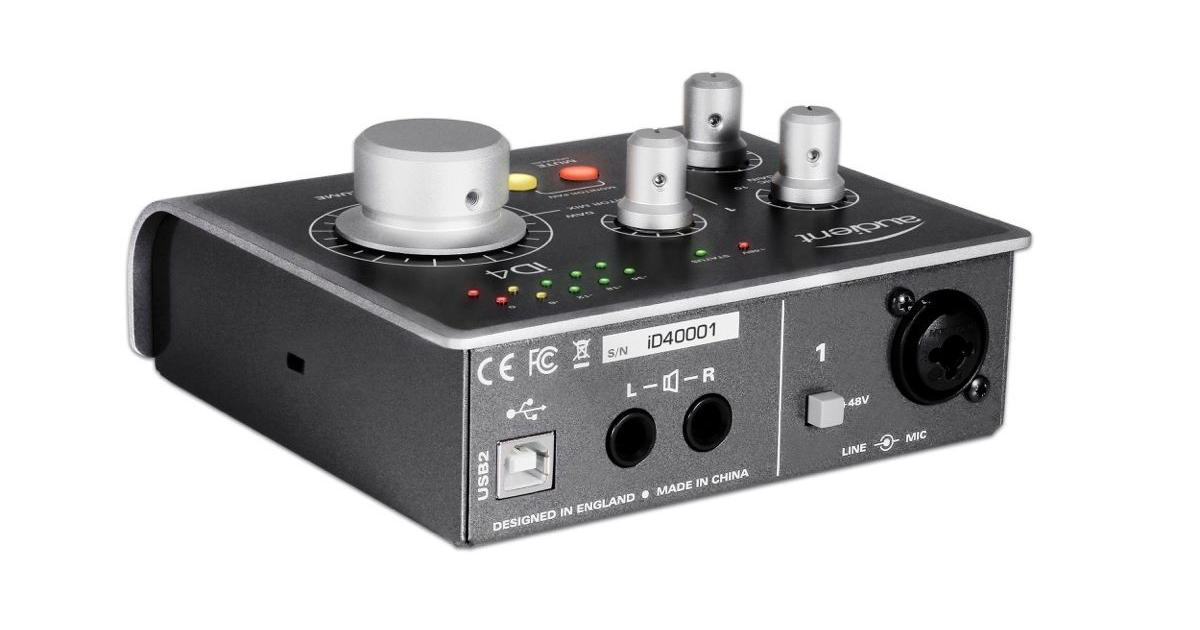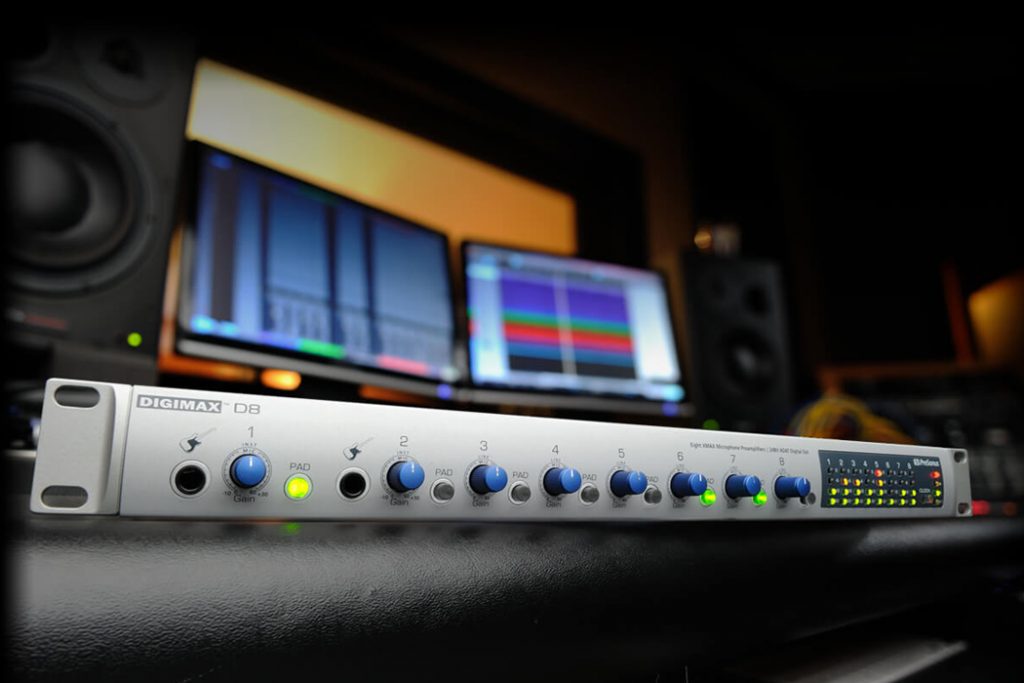
+ Learning to record and mix music at home? Soundfly’s online courses on mixing, producing, and beat making can help! Preview for free and subscribe for access.
Did you know that a microphone signal is, in fact, very weak? A lot of gain is required to record microphones in the studio, and this is usually around 30-60dB!
A mic preamplifier, otherwise known as a mic preamp, boosts the signal of a microphone or an instrument (such as an electric guitar) to the standard operating level of most recording equipment. Using a mic preamp is vital. Without one, we would barely be able to hear anything from our microphones.
The bottom line is that microphone preamps are crucial in our home recording studios, just as much as they are in world-class facilities.
In this article, we’ll look at the different types of mic preamps available and discuss whether it’s worth investing in a dedicated outboard mic preamp. But first…
Mic preamp or phantom power?
I’m not sure why but I get this a lot. So first of all, let’s not get confused between a mic preamp and phantom power. A mic preamp is used to amplify the microphone signal, while the role of phantom power is to supply power to the microphone for it to work. They are totally separate.
A condenser microphone must receive 48v phantom power in order to function. Once a microphone is working, the preamp is then employed to boost the signal to increase it to line level.
It should be noted that all good mic preamps come with phantom power capabilities, whether audio interfaces with built-in preamps or external microphone preamps.
Every recording interface has built-in mic preamps.
The great news is that pretty much every audio interface on the market today already comes as standard with built-in mic preamps to facilitate recording. So, if you own an audio device with a microphone input, it will contain a mic preamp. If you own a recording interface with numerous audio inputs, it will include a mic preamp for each channel.
The most popular modern USB and Thunderbolt audio interfaces are brilliantly designed, too. Technology has advanced significantly over the years, so even the most affordable, compact recording interfaces come equipped with surprisingly capable preamps.

Mic preamps in-built with popular entry-level audio interfaces from brands such as Focusrite, PreSonus, and Audient are clean and transparent sounding. Audient even offers a microphone preamp with their affordable iD4 interface that is from their large-format mixing consoles.
However, it’s worth noting that more expensive audio interfaces will still have better quality preamps, and if you go one step further, dedicated outboard preamps offer the most significant sonic potential. Let’s learn more about that.
Tell me more about outboard preamps!
Outboard microphone preamps are pretty expensive pieces of audio equipment. You will have seen these in professional recording studios, commonly mounted inside rack units. When an engineer chooses to use a dedicated mic preamp, it bypasses the preamps found in audio interfaces and mixing desks.

Dedicated mic preamps can be very expensive, just like microphones. Engineers and producers will usually have their favorite preamps, settings, and familiar mic and amp combinations that deliver a specific desired sound. Analog tube preamps range in price, but they can carry costly price tags.
What are the benefits of owning a dedicated mic preamp?
As you spend more on recording equipment, you expect to receive better sound quality and greater tonal options when looking to achieve a desired result. Most professional studios have a wide range of mic preamps available to choose from, so if you’re recording in studios more often than at home, it might not be wise to spend lots on a preamp, when a cheaper audio interface can achieve decent signals.
The choice of microphone and mic preamp are the two most important elements that affect the tonal quality of your recordings. Just like how microphones have their own distinctive personalities, so do microphone preamps.
Dedicated mic preamps offer an improved sound quality than the preamps that come as standard with cheaper audio interfaces, or as plug-ins. This becomes more apparent at higher gain settings, and especially for especially low output microphones. In addition to this, the most common reason as to why someone would buy a dedicated mic preamp is because of the unique sound characteristics of the equipment.
Often, the only way to achieve a specific dialed in sound is through an outboard mic preamp. I have used several high-end preamps for recording drums, and I find that they add color to the recordings and improve the drum tones in optimal ways for my usage. So…
+ Read more on Flypaper: “Setting Up a Home Studio? You CAN Deal With Acoustics!”
Is it worth investing in a dedicated mic preamp?
Whether or not you should invest in a dedicated mic preamp depends on your level of experience, needs, and what you hope to achieve from your home studio recordings. Here are a few good ones for those of you on a budget.
If you are getting started with home recording and want to make your own demos, you should definitely stick with the mic preamps included with your entry-level audio interface. It is not only more convenient and affordable, but these preamps are sufficiently clean and transparent for your projects.
Many other factors will heavily influence the quality of the recordings that should be considered before buying a high-end mic preamp, including:
- Choice of microphone
- Microphone setup and positioning
- The room and recording environment
- Quality of the musician’s performance
- Quality of the musical instrument
Before blaming the quality of your mic preamps as the reason your mixes lack clarity or richness, make sure that your other factors are in check. For example, if you are recording an electric guitar, be sure it is always tuned up correctly and set up with new strings. On the flip side, If you are already heavily involved with recording and consider yourself relatively experienced, it’s worth expanding your setup to have more creative options.
Therefore yes, it’s absolutely worth investing in a dedicated microphone preamp for your studio sessions!
Continue learning with hundreds more lessons on mixing, home audio production, recording, beat making, and much more, with Soundfly’s in-depth courses, like Modern Pop Vocal Production, Advanced Synths & Patch Design, and Faders Up: Modern Mix Techniques. Subscribe for access here.





